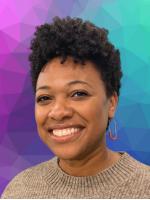


The purpose of this session is to bridge the gap between the tried and true research on how the brain learns and retains information, and the day-to-day reality of teaching a dynamic classroom of students. This session provides practical strategies and digital tools to support learning that sticks.
Objectives:
1. Recall key concepts related to how we learn, retain, and express information.
2. Reflect on current teaching practices and evaluate alignment to the science of learning.
3. Identify brain-based strategies and associated tech tools to incorporate into daily lessons and routines.
1. Introductions
2. Introduce the Science of Learning Research
3. Exploration of Resources
*What elements are you already implementing in your classroom?
*How does this information align with your school experiences?
4. Reflect on takeaways and impact on professional practice.
(n.d.). The Learning Scientists. Retrieved August 1, 2022, from https://www.learningscientists.org/
(n.d.). Education Conferences, Professional Development For Teachers, Teacher Conferences. Retrieved August 1, 2022, from https://www.learningandthebrain.com/
Center for Transformative Teaching & Learning. (2020). A science of learning guide to education technology. The Center for Transformative Teaching & Learning at St. Andrew's Episcopal School. https://www.thecttl.org/wp-content/uploads/2020/05/Science-of-Learning-Guide-1.pdf
Lang, J. M. (2020). Distracted: Why students can't focus and what you can do about it. Basic Books.
Lang, J. M. (2021). Small Teaching: Everyday lessons from the science of learning. Wiley.
Rogowsky, B., Oakley, B., & Sejnowski, T. J. (2021). Uncommon Sense Teaching: Practical insights in brain science to help students learn. Penguin Publishing Group.
Watson, E., & Busch, B. (2021). The Science of Learning: 99 Studies that every teacher needs to know. Routledge.